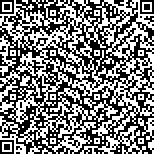| 摘要: |
| 无人驾驶技术的普及为传统城市交
通模式与空间形态带来了全新挑战,亟需探
索适应技术变革的城市空间设计路径。研究
聚焦无人驾驶技术变革背景下的城市空间变
化,首先总结出无人驾驶将带来的交通效率
提升、共享出行普及、城市空间模块化等趋
势,其次提出构建扁平化路网系统,减少道
路等级差异;释放部分道路空间,转化为公
共空间;推动混合用地布局,促进功能复合
等城市空间设计策略。最后以福州大学城片
区为例,将上述策略具体应用其中,为未来
无人驾驶背景下的城市空间演变及设计提供
参考。 |
| 关键词: 无人驾驶 城市空间 共享出行 城市设计 用地布局 |
| DOI:10.13791/j.cnki.hsfwest.20250406004 |
| 分类号: |
| 基金项目: |
|
| An initial exploration of urban space design strategies in the context of unmanned driving:A case study of Fuzhou University Town area |
|
HUANG Jingnan,LUO Jing,MA Can,XIE Dong
|
| Abstract: |
| The widespread adoption of autonomous driving technology poses new challenges to
traditional urban transportation modes and spatial structures, necessitating a paradigm shift in urban
planning methodologies to align with emerging technological realities. This study addresses the
critical need to reimagine urban spaces through adaptive design strategies that harmonize mobility
innovations with human-centric urbanism, ecological sustainability, and functional efficiency.
Focusing on urban spatial changes driven by autonomous driving, this study first identifies key trends
such as enhanced transportation efficiency, the popularization of shared mobility, and modularization
of urban spaces. Subsequently, it proposes urban design strategies including the construction of a
flattened road network system to reduce hierarchical road distinctions, establishment of multi-modal
transportation hubs, conversion of redundant road spaces into public areas, and promotion of mixeduse
land layouts to enhance functional integration. Taking the Fuzhou University Town Innovation
Hub as a case study, these strategies are applied to provide actionable references for future urban
spatial evolution and design under autonomous driving scenarios. Specifically, the study delves into
the profound impact of autonomous driving technology on urban transportation and spatial
organization. It highlights how the technology will revolutionize transportation infrastructure and
urban planning, thereby influencing land use and the overall urban design paradigm. The research also
explores the potential of autonomous vehicles to enhance traffic flow, reduce congestion, and improve
the overall efficiency of urban transportation systems. It discusses the possibility of repurposing road
spaces that are no longer needed for parking or traditional traffic purposes into vibrant public spaces,
such as parks, plazas, and community areas. Additionally, the study emphasizes the importance of
mixed-use developments in creating more walkable, sustainable, and livable urban environments. By
integrating residential, commercial, and recreational functions within close proximity, cities can
reduce the need for long commutes and minimize the reliance on private vehicles. The study also
contemplates the broader implications of autonomous driving technology for urban planning and
design. It suggests that the technology could facilitate the creation of more flexible and adaptable
urban spaces that can evolve over time to meet changing societal needs. Furthermore, the research
provides a practical application of these strategies through a case study of the Fuzhou University
Town area. It illustrates how the principles of flattened road networks, mixed-use layouts, and public
space enhancement can be implemented in a real-world urban context. By applying these strategies to
the specific conditions and requirements of the Fuzhou University Town area, the study offers
valuable insights and actionable references for urban planners and designers who are grappling with
the implications of autonomous driving technology for future urban development. The research
acknowledges the uncertainties and challenges associated with the adoption of autonomous driving
technology, such as safety concerns, public acceptance, and data privacy issues. Despite these
challenges, it posits that autonomous driving technology holds significant promise for transforming
urban spaces and improving the quality of urban life. In conclusion, the study underscores theimportance of proactive and innovative urban spatial design in harnessing the benefits of autonomous driving technology and shaping more efficient,
sustainable, and livable cities for the future. |
| Key words: autonomous driving urban space shared mobility urban design land use layout |


